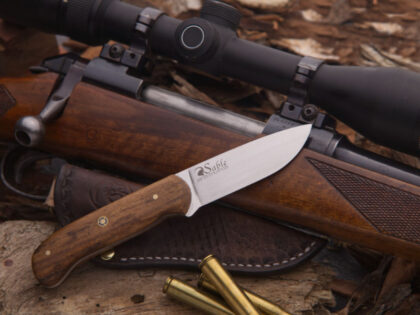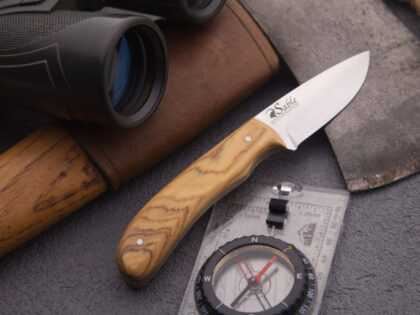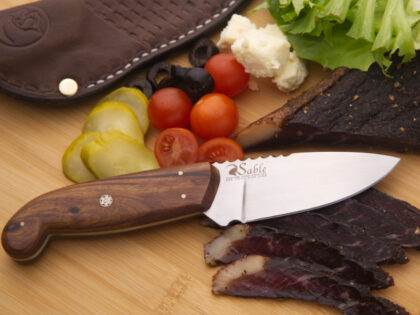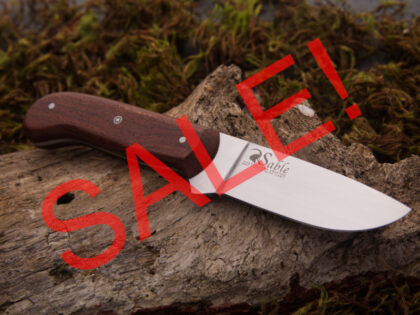Your knife has been constructed with the finest materials available. It is, however, a tool, and though some fine knives will never cut anything but gasps of admiration, all knives deserve proper care. My knives are built to last for several generations, with sheaths that should last at least one generation with moderate care. There’s no reason your knife can’t outlive you, unless you’re a relentless cutting maniac! Some important points:
- The weakest part of any knife is usually the tip, which happens to be the most abused part! Take care of the point, and the rest of the blade will follow.
- The knives that I make are NOT dishwasher safe. I use natural wood for handles in most cases. The high temperature of a dishwasher will affect the wood.
- Never throw knives, unless specifically designed for that use. I don’t make throwing knives.
- Never use knives to pry, dig, or chop. Get a pry bar, shovel, or axe instead.
- Do not leave knives and sheaths in direct sun or high heat. Ultraviolet light oxidizes woods. Heat bakes the protective oils out of most hardwoods and weakens adhesive bonds. Prolonged exposure to the sun and heat can also destroy knife sheaths.
- To clean, hand wash blades when necessary with non-abrasive gentle detergent, rinse well and dry.
- Clean handles and sheaths with damp cloth and buff with soft dry cloth. A light coat of a bees wax compound can bring back luster. Do not over-wax. A very small amount goes a long way.
- Do not use any kind of oil on the sheaths; this will cause them to soften, weakening their protective function, softening glues, sealants, and dyes.
- Never oil any knife! This is an old practice from the 19th century. Even if a sheath is wood, don’t use oil. Oil attracts dust and small abrasive particles. These particles will end up in the sheath, no matter what the sheath is made of, and will scratch the blade. Wax will remain slick and resist dirt, sand, and abrasive particles.
- Laser etching is used in the maker’s mark on my blades. If you live long enough to polish away the etching without the help of power equipment, you won’t have any fingertips left!
- Wood handles usually benefit from a light coating of furniture wax and a good hand rubbing.
- It is normal for some scuffing to show on the front bolster or guard, this is where the sheath holds the knife. Polish brass often, coat with wax.
- For very long term storage, store your knife with the sheath, NOT in it! The chemicals used in tanning of leather sometimes react with moisture in the air, leading to corroding of even stainless steels! If you can’t keep the knife in the open, dry air, store with photographic quality desiccant in a plastic bag apart from sheath.
- Keep knives sharp. Most accidents occur when dull knives are pushed too hard.




